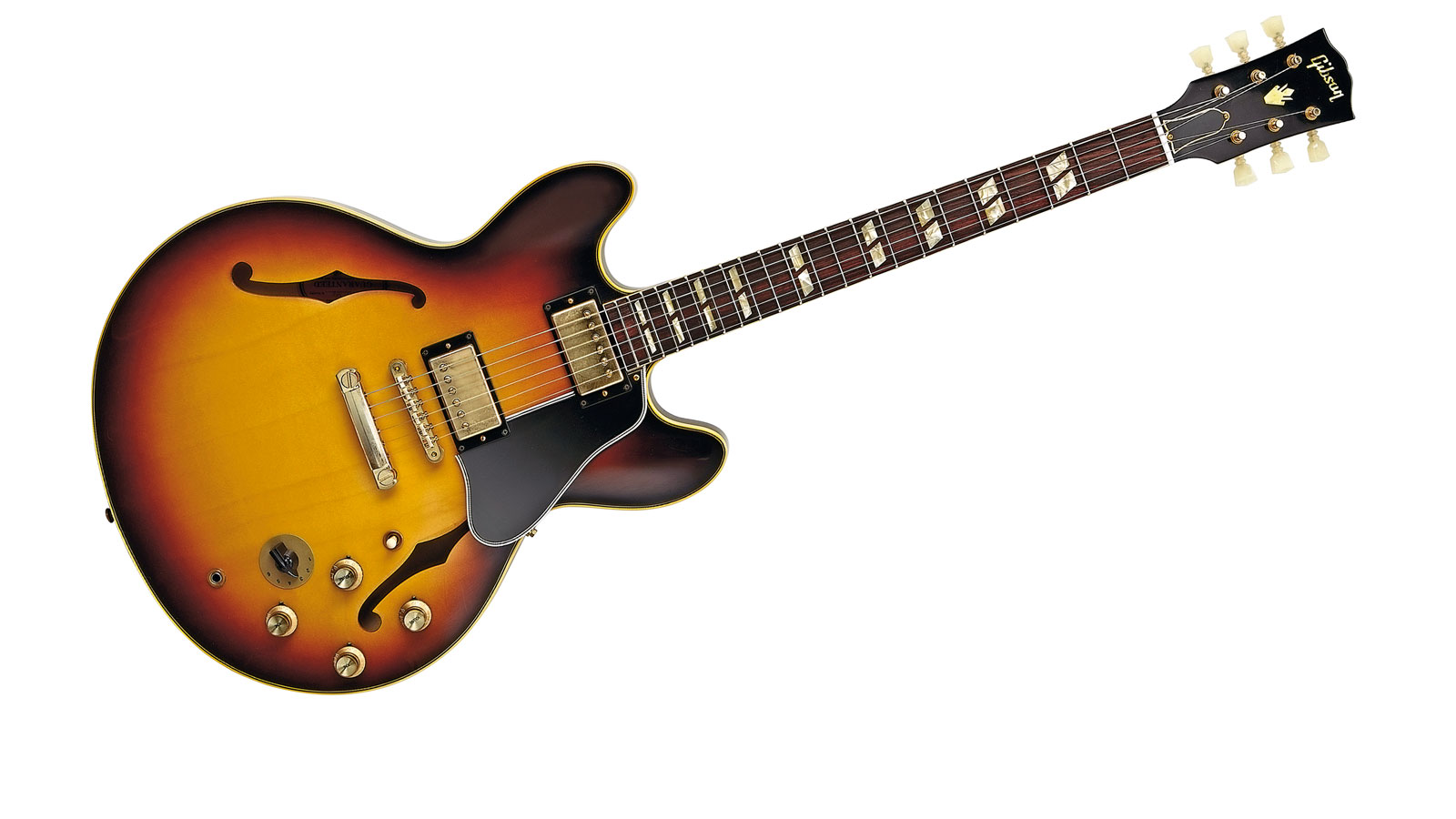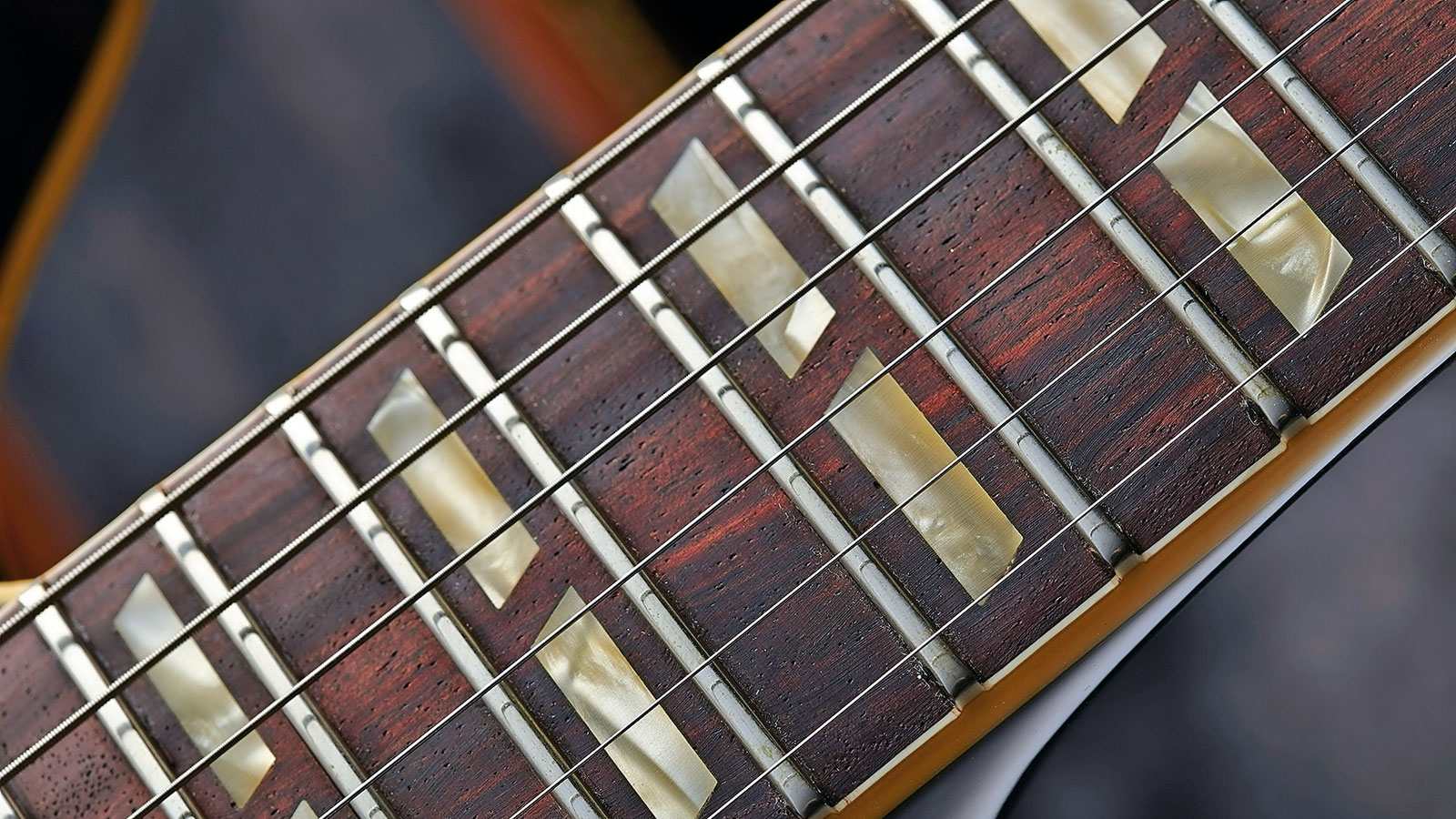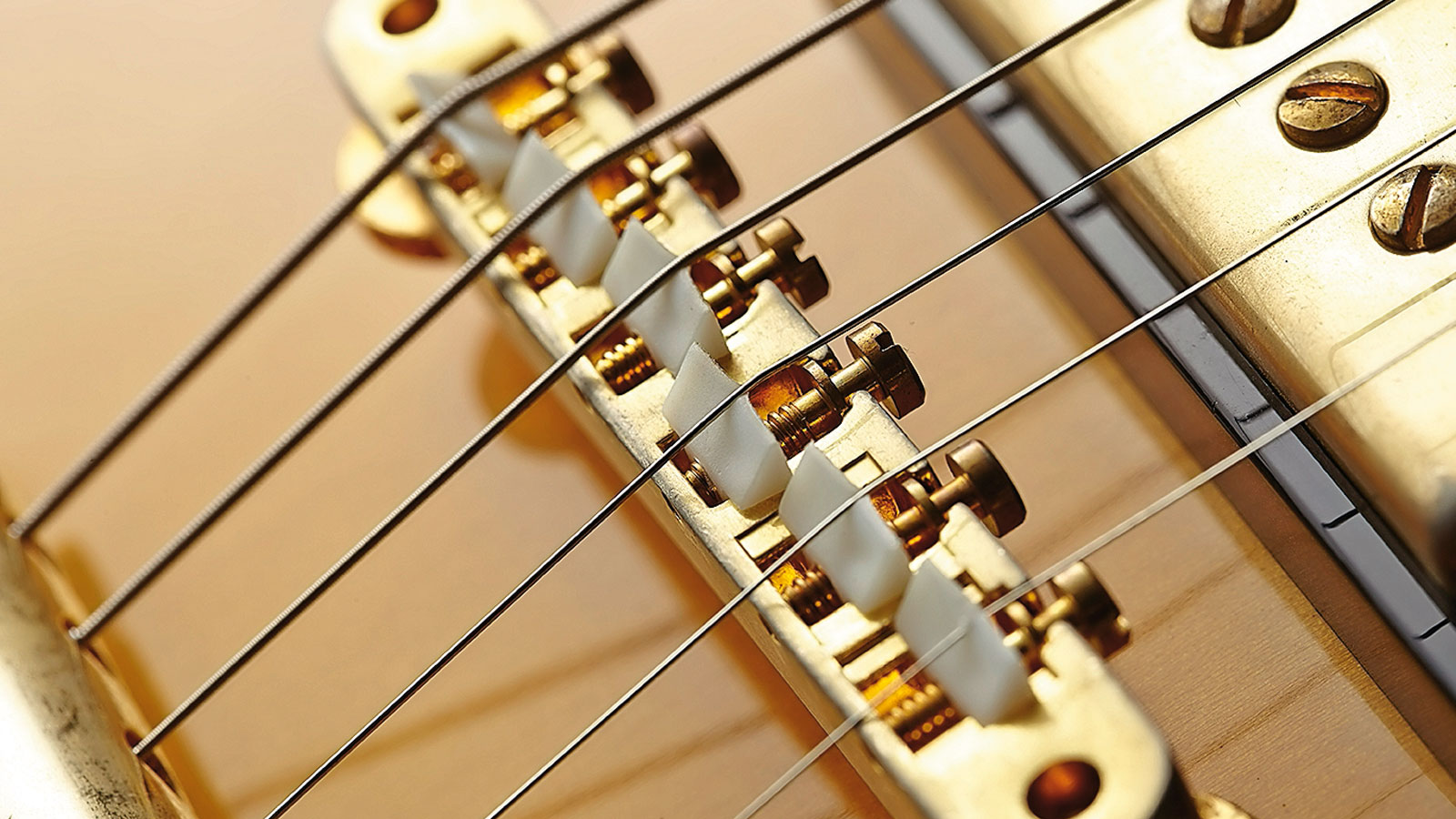MusicRadar Verdict
It doesn't quite capture the tonal excellence of the recent 50th Anniversary 1963 ES-335, but it's close, plus the Varitone offers a wealth of sonic options.
Pros
- +
Top-notch Gibson Memphis build. Great for studio tracking. Captures the vintage mojo. Host of different tonal colours.
Cons
- -
Varitone not for all.
MusicRadar's got your back

Gibson 1964 ES-345 TD

Fretboard

Finish

Bridge
Back in 1959, the primary differences between the Gibson ES-345 and the ever-popular ES-335 were its stereo output, Varitone circuitry, bound fingerboard with double parallelogram inlays and gold-plated hardware.
"There are certainly stellar tones to be found, especially if you lean to the rockier side"
The slightly narrower horns put our sample post-62, the shorter pickguard from early-61, while the gold Varitone legend plate changed from black in late-59.
Probably sensibly, Gibson has moved this 2014 recreation from stereo to standard mono, though there are plenty of details to keep the vintage buffs happy, not least the double-ring Kluson tuners and the additional purfling inside the nicotine-toned binding on the top edge only.
Once again, the V.O.S. treatment hits the spot: the gold plating is nicely toned down and much more classy-looking.
This ES-345 is a heaviest guitar compared to Gibson's other semis - no deal breaker, but we'd advise you trying a few. It also illustrates the upper level of the late-50s/early-60s Gibson thinline range, which was topped by the ES-355.
Feel & Sounds
The ES-345 is a subtly different proposition, and that's with the Varitone bypassed (position 1). We don't quite have the high-end clarity and detail of an ES-335 - it has different pickups for one, and there's the weight difference, too.
It's slightly less dynamic, with a little less resonance perhaps - a little more solid-sounding? But plenty of those things could work in your favour. There are certainly stellar tones to be found, especially if you lean to the rockier side.
Want all the hottest music and gear news, reviews, deals, features and more, direct to your inbox? Sign up here.
"It'd make a great tracking guitar in the studio, where you may need a host of different colours"
The Varitone won't be for everyone, with its range of filtered sounds that, certainly in stereo, back in the day, must have sounded quite otherworldly. Each one provides considerable volume reduction, too, and different frequencies/resonances of quite honky, almost out-of-phase-like filtering.
Of course, with a pretty clean amp tone there's classic BB King-style blues aplenty here, some great Chuck Berry-like rhythm, a little Rickenbacker in there with volume reduction... We have to say it'd make a great tracking guitar in the studio, where you may need a host of different colours.
With gain, some altogether nastier sounds emerge, while with clean tones, and an outboard phase effect, old-school funk oozes from its pores. If the ES-335 is for the 'purist', this ES-345 may well appeal to those players who like to mix it up a bit.
The ES-345 would work well with a host of sounds, and a studio guitarist or someone wanting to stretch the sonic boundaries a little should try it.
New guitars that feel and look old aren't a new thing, but few do it better than Gibson Memphis, whose guitars not only seem to get more vintage-accurate by the day, but also seem to supply that elusive 'mojo' of real vintage pieces without the high cost or worries about authenticity or wear.
Dave Burrluck is one of the world’s most experienced guitar journalists, who started writing back in the '80s for International Musician and Recording World, co-founded The Guitar Magazine and has been the Gear Reviews Editor of Guitarist magazine for the past two decades. Along the way, Dave has been the sole author of The PRS Guitar Book and The Player's Guide to Guitar Maintenance as well as contributing to numerous other books on the electric guitar. Dave is an active gigging and recording musician and still finds time to make, repair and mod guitars, not least for Guitarist’s The Mod Squad.
